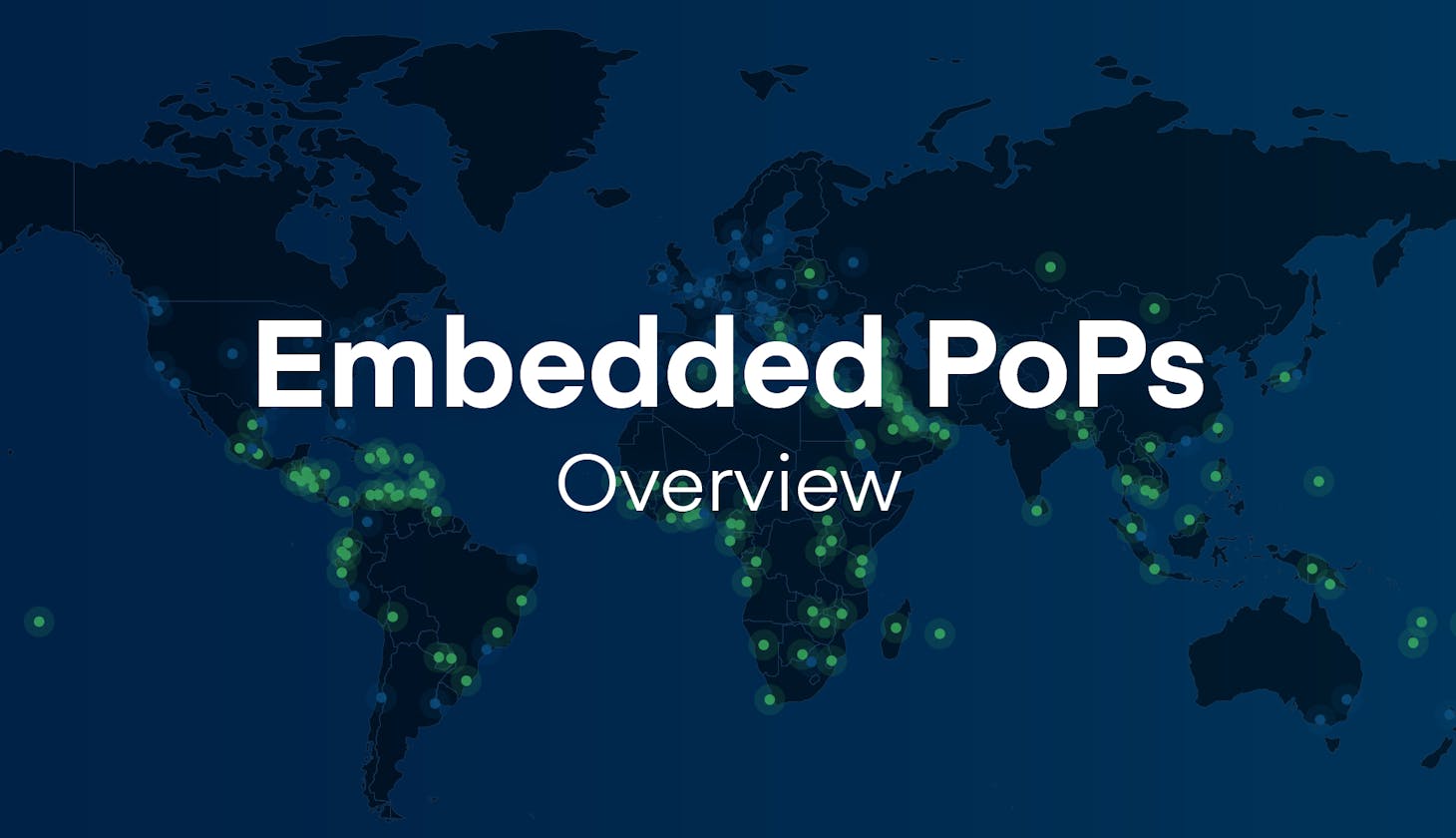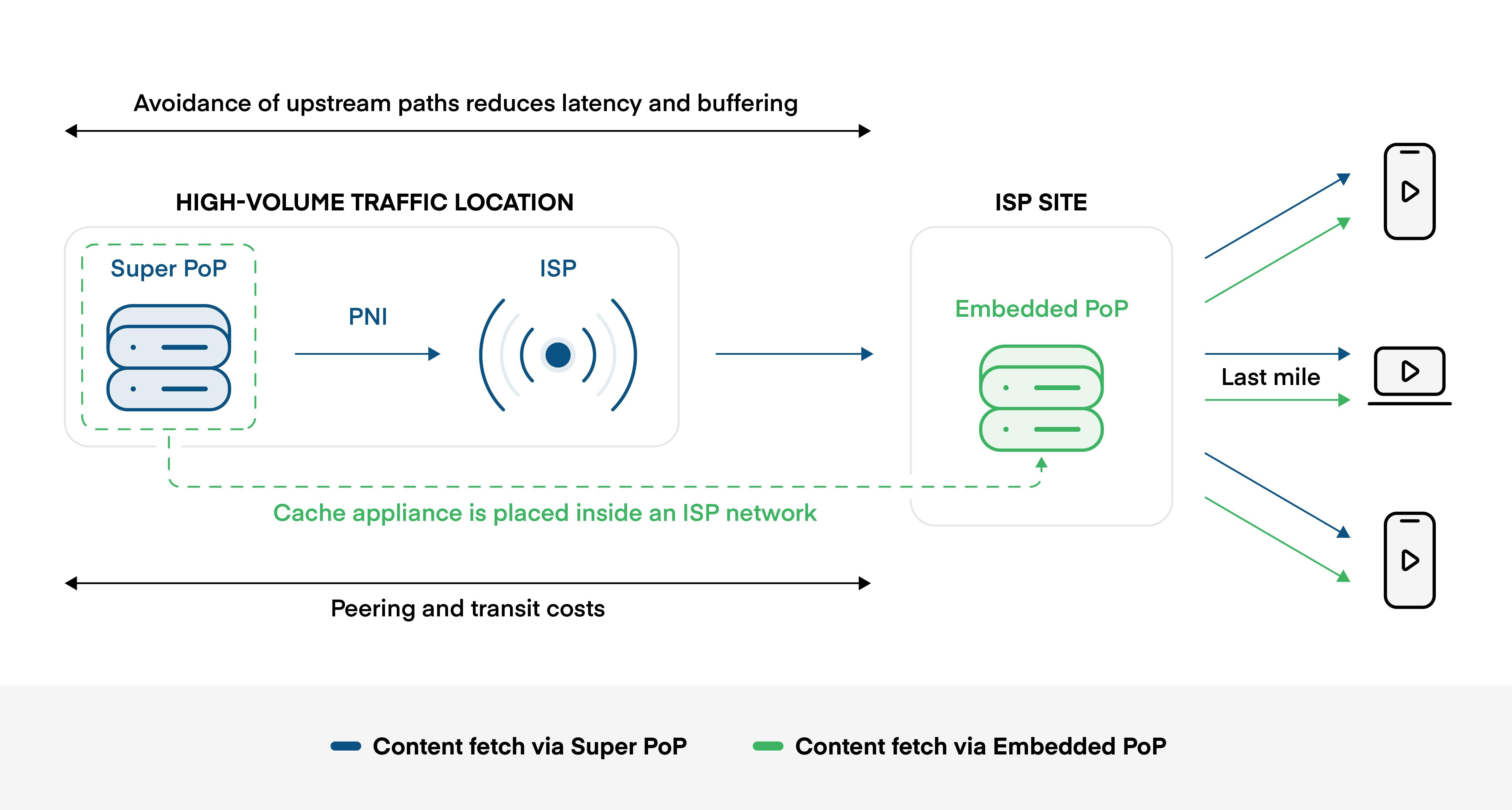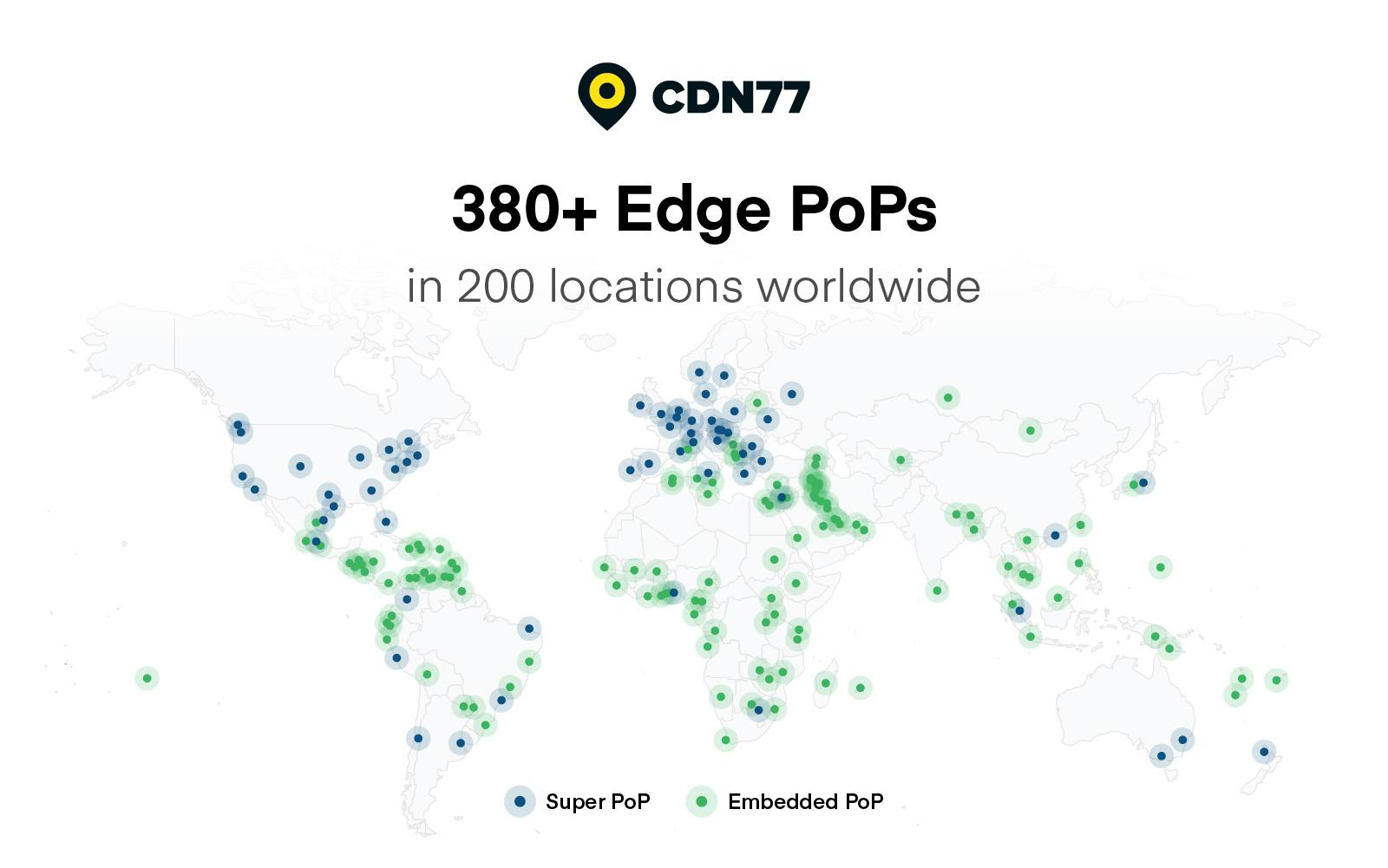Embedded PoPs Overview: Improving Our Last-Mile Capacity Through ISPs

Since 2011, our journey has been steadily and continuously gaining pace. Today, we operate a global network comprising 380+ edge PoPs in 200 locations worldwide across 130 countries. We keep building our last-mile capacity through Embedded PoPs, our synergy with ISPs, with an ambitious goal in mind: to deliver the highest-quality viewing experience as quickly as possible while also ensuring lower costs for all parties involved.
How do Embedded PoPs speed the internet?
We deploy PoPs strategically at high-traffic locations with excellent interconnectivity. These are CDN77’s Super PoPs. They connect to the largest networks in the area through settlement‑free interconnection (SFI) using private peering (PNI). But we also run hundreds of custom-built cache appliances embedded directly inside ISP networks and integrated with the ISP’s routing policy.
These embedded caches handle large traffic – such as live events or VOD – without forcing it onto congested upstream paths. By keeping traffic inside the ISP network, they further minimize the geographic distance data travels to the end user. This helps reduce the buffering and latency for the end viewer, especially in locations without a nearby Super PoP. It also lowers transit and peering costs for the ISP.

Figure 1: An overview of Embedded PoP architecture
When it comes to how an Embedded PoP works, it is essentially a local cache appliance that stores content and serves it over HTTP/HTTPS. Because it sits inside an ISP network, client requests are steered directly to it. The Embedded PoP continuously fetches objects from the upstream CDN77 infrastructure and then distributes them, bringing the content closer to the end user.
How do Embedded PoPs benefit ISPs?
Embedded PoPs reduce latency due to a cut in the round-trip time, avoid congestion points, and decrease buffering when media is played.
In addition to making the internet more efficient for end users, Embedded PoPs offer another significant benefit for ISPs. By serving cacheable traffic from inside their networks, Embedded PoPs offload external capacity that would otherwise traverse upstream links. This means a reduction in external traffic by 60-90% for cacheable content from AS60068. The result is a drop in transit and peering costs.

Figure 2: CDN77’s global network
Join the program
Interested? If you’re an ISP looking for more information about placing an Embedded PoP inside your network, let’s talk. We have all the right tools and experience to ensure a smooth joining process to our partner program which already benefits hundreds of ISPs.
Contact: cacheops@cdn77.com

Head of Network Operations